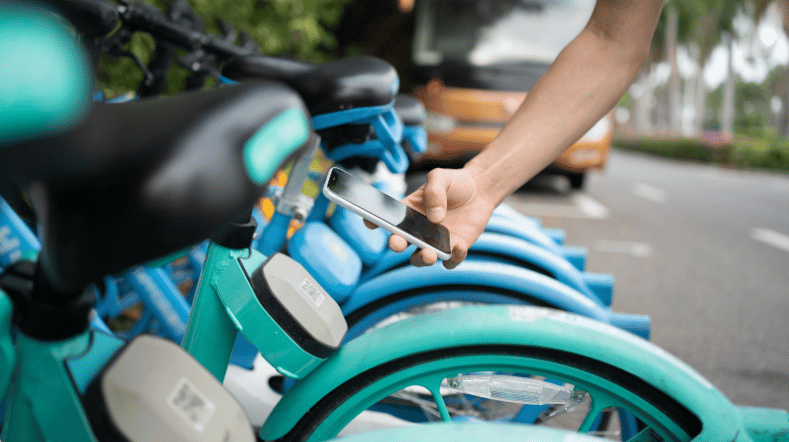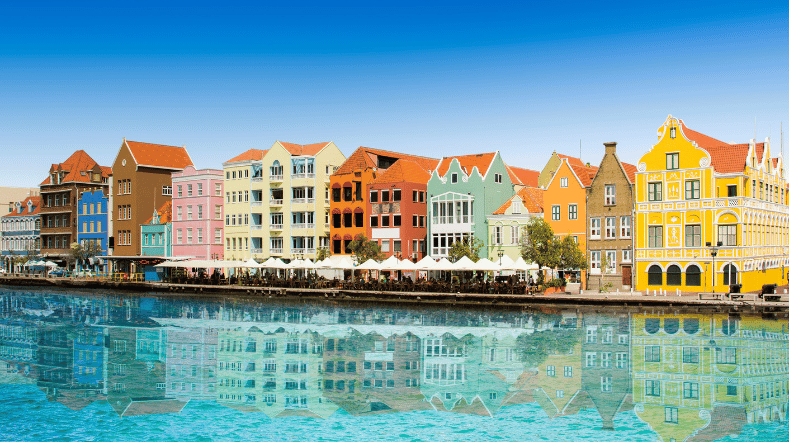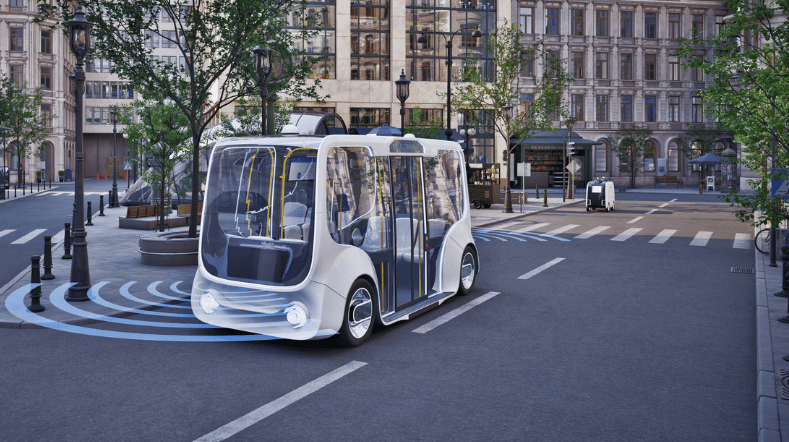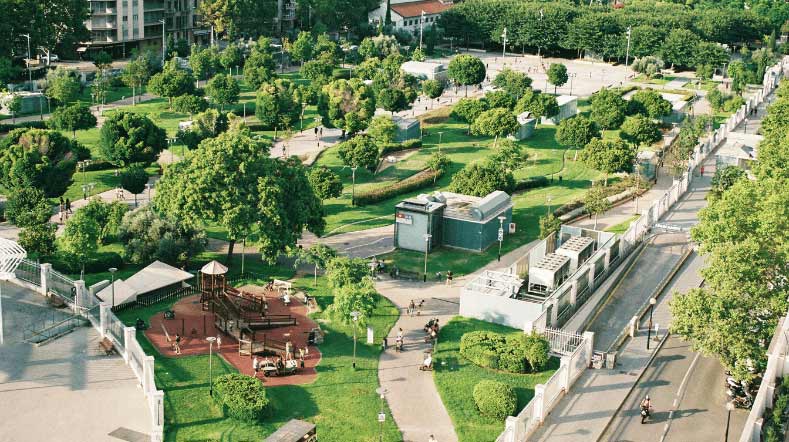
Logistics hubs for zero-emission urban distribution
From 2025 onwards, nearly 30 major cities will be pushing for a gradual ban on fossil commercial vehicles. These will be concretised in so-called zero-emission zones, a measure defined in the national Climate Agreement to ultimately reduce CO2 emissions from commercial traffic (vans and trucks) by 1 Mt.
White label hubs
This is causing great unrest and objections among carriers and other private-sector companies. They see no real chance of electrifying all their own transport and are sounding the alarm. In doing so, they are forgetting that merely electrifying vehicles will not solve the congestion, delays, and unsafety in increasingly crowded cities that need to remain both supplied and liveable. Yes, more electric vehicles in the city will help, but other ways of running operations, including the use of urban consolidation centres (so-called ‘white-label hubs’) can also make a significant contribution to resolving all three urban bottlenecks: reducing emissions, reducing the number of vehicles on the road, and increasing the efficiency of journeys for freight and services in the cities, with less nuisance and safer traffic as potential by-products.
The concept here is that carriers can purchase zero-emission transport services to and from the city from a hub on the outskirts of the city. As a result, individual carriers will not all need to deploy battery-electric vehicles themselves for use in future zero-emission zones.
From the city’s perspective, hubs seem to be the optimal way to organise supply in the city and improve liveability. The assumption here is that many vehicles inefficiently drive in and out of the city, resulting in more lorries and delivery vans on the road than necessary. By combining different logistics flows into hubs on the outskirts of cities, fewer vehicles would be needed to get the same volume in and out.
Despite positive results from studies into hubs, hub solutions have not yet gained widespread appeal. In a number of studies, we examined different aspects of the logistics city hub. How can hubs be used optimally and what are the applicable preconditions? In our research, we looked at who the hubs are a solution for, what their value is, which functions they offer, where they should be located, and what developments we can expect in the years to come.
Efficiency in logistics services
As regards the expected positive effects of a hub, the focus is often on optimisation from the city’s perspective, rather than from the perspective of existing logistics chains. This assumes that logistics service providers are not organising existing flows efficiently, because they do not drive into cities ‘full’.
However, discussions with logistics service providers revealed that most do organise logistics as efficiently as possible within their existing constraints, such as time windows and commercial agreements. Nonetheless, at the city level, the sum of all those efficient urban logistics trips has not led to an optimal solution. For efficient logistics, the city’s interests are often at odds with the interests and capabilities of logistics service providers. We should also consider that the majority of company vans, which should also become zero-emission, are offering services rather than delivering goods. Consider, for example, construction vans, plumbers, and a wide spectrum of SMEs (such as the local wine shop).
For hub concepts to successfully scale up to benefit urban liveability and add value to users, it’s important to look at two key puzzles pieces: ‘What added value do they offer customers?’ and ‘What can public authorities do?’

Logistics as a spatial issue
The advent of zero-emission zones, urban densification, and a heightened emphasis on liveability are putting logistics high on the agenda of policymakers. On top of this, infrastructure is decreasing due to an increased focus on active mobility and cars being actively kept out of the city. This makes the presence of logistics vehicles in the street even more obvious.
A lot of work is being done on alternatives to passenger mobility (such as shared mobility and improved cycling infrastructure), but there seem to be few alternatives for logistics. Some of the volume can (after transhipment at hubs) be delivered by cargo bikes and light electric freight vehicles, but for many large logistics volumes, such as the supply of shops and construction sites, and collecting waste, lorries are often the most efficient option. However, this doesn’t mean that there isn’t any room for improvement at the urban level.
For cities that are decreasing in accessibility, it’s important to ‘decouple’ or bundle around the city. With this, logistics policy is not only a traffic issue, but also a spatial one.
For the Municipality of Rotterdam, we used the TNO-developed Decamod toolbox to estimate the space needed for hubs in 2030. The estimate is based on the number of trips that realistically do not need to enter the city (the reduction potential resulting from measures such as bundling, for example). This was based on existing conditions; how accessible the city is, which barriers a carrier experiences, and what value hubs offer to the end (paying) customer.
Depending on the type of transport, it is estimated that the number of van trips (roughly 12% of total urban traffic numbers) could be reduced by approximately 12%. Lorry trips, on the other hand, could be reduced by around 5%. To determine the space requirements for the hubs, a distinction was made between various types of flows of goods and services. After all, a hub for fresh goods has different space requirements than a park and ride for vans (from the construction and services sector, for example) or a construction hub. This makes it important that such hubs are developed at the right locations with the right functions.
We are seeing an increasing focus on the ways in which logistics can be spatially integrated into cities. This is an important development. We have addressed the spatial integration of logistics in new area developments in several studies in CILOLAB (City Logistics Living Lab). By including in the design logistics facilities such as microhubs, parcel lockers (in mobility hubs, car parks, and flats, among others), and indoor unloading areas, the dwell time of and nuisance caused by logistics vehicles can be significantly reduced. Now and also in the future, as spatial plans will determine the space for logistics in cities for years to come.
Hubs have a more regional character
In the past, logistics real estate mostly served an (inter)national market, but today, we’re also seeing more regional hubs. The many logistics hubs are increasingly being used as urban distribution centres, especially following an increase in the home delivery of both parcels and groceries. Consider, for example, parcel delivery companies’ sorting centres and the local hubs of the various grocery delivery companies, or the dark stores from which flash delivery companies enter neighbourhoods. These are not ‘white-label hubs’, but ‘dedicated hubs’ operating in a logistics network that is used and optimised by one company.
Regional logistics service providers sometimes also work together to use each other’s distribution centres. One example is the Transmission network through which carriers outsource loads to each other. Transporter Bode Scholten, for example, saved between 56 and 63% of its driven kilometres and between 71 and 76% in CO2 emissions through network cooperation.
Some (local) governments and institutions use their market role as major purchasers to promote, through their procurement terms and conditions, a city hub themselves as ‘launching customers’. The idea here is that this will also make it easier for hub entrepreneurs to offer city hub services to other customers. TNO is also participating in this in The Hague.
Value creation for various users
The framework conditions set out by cities are an important part of the puzzle of achieving more city-centric consolidation. In many cases, hubs currently offer limited added value in existing logistics chains. Merely transhipping goods for consolidation is not a proposition for shippers, carriers, or receivers (especially if costly). Such sites should be developed (multifunctionally) to offer broader services to users in the future. There needs to be a reason why potential users would move to a hub location and/or use the services offered there.
Users need not only be transporters, but can also be, for example, energy suppliers, catering companies, and various other types of shippers. This can combine various activities at a hub location, such as processing return flows, cooking (after which prepared meals are transported bundled), and local energy generation with charging infrastructure and smart charging strategies for zero-emission urban logistics. The value created depends on the business segment, from fresh and parcel deliveries to construction and service logistics. Estimates show that up to 70% of commercial vans in cities are mainly active in the construction and service sectors.
Zero-emission transport
In CILOLAB2, we will work at CLIC (the City Logistics Innovation Campus) on issues related to the (company-specific) opportunities and propositions that a hub presents to organise urban logistics differently and enable zero-emission transport. In addition, we will look at the policy and spatial framework conditions that can encourage the use of hubs.
Last-mile delivery
For the coming years, it’s very important that the demand for and supply of specific urban logistics services (so-called ‘last-mile services’) increase so as to actually contribute to reducing the number of logistics vehicles and emissions in the busy and crowded city of the future. Hubs should be developed from the added value for users. There’s no one type of hub with services that will work everywhere. For example, a ‘dedicated hub’ also offers consolidation potential, while hubs can also be applied at different geographical scales, ranging from large-scale multipurpose hubs to microhubs deep in the city.
We need to keep putting the different pieces of the puzzle together, looking for working pieces that offer both a proposition for businesses and benefit the liveability of cities.
Working towards a liveable city?
Find out how TNO is helping policymakers shape the liveable city of tomorrow.
Get inspired
How governments can make MaaS work to societal goals


With Urban Strategy, TNO connects with innovative U.S. West Coast in San Diego


Scenario-based thinking contributes to sustainable mobility and retention of human capital in Curaçao


6x liveable cities with smart mobility


XCARCITY: effective digital twins for tomorrow’s low-traffic city



